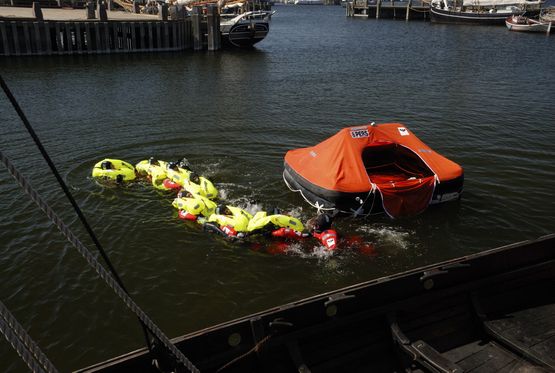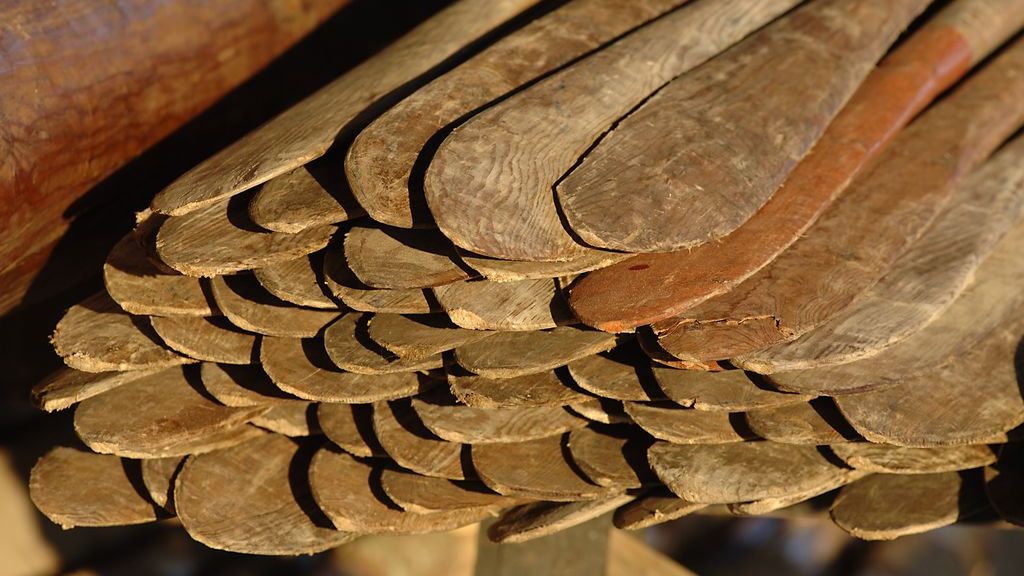“Okay… something terrible is happening right now! You have two minutes to get into the safety suits”.
The command comes from the pier in the harbour at the Viking Ship Museum in Roskilde, where Jan Larsen stands. He is timing the 24 crew members, while they onboard the reconstruction ‘Helge Ask’ in silent concentration bustle with their safety suits.
“It has been thirty seconds. When you are done, help each other”.
There is subtle cussing of the tricky zippers and tight collars. With a minute and a half gone several crew members still struggle.
“Does this suit even have a hood?” asks a member of the crew, aimlessly fumbling at his back.
“If there is a hood? Make your buddy check it,” is the reply from the pier. The Sea Stallion crew is divided into small teams of two persons – one of the purposes of this system is, to make the crew – two by two – keep an eye on each other and help out in emergencies like this.
Important to vent the air
“Well… more than three minutes have past,” Jan Larsen impatiently exclaims. Still a few crew members squat trying to press put excess air from the suit, before being ready to finally evacuate ship. If the suit is full of air, it may be fatal because the air may cause so much up-drift in the back that it becomes close to impossible to turn face-up in the water.
After about four minutes the crew abandon ship two by two. Afterwards they lie passively in the water for moment. They let their breathing calm down, before grabbing their buddy to slowly swim for the opposite pier.
The majority swim back strokes, but some try breast strokes.
”Do not do that”, Jan Larsen makes clear at the evaluation following a series of events – for example the one where the ship mates in teams of eight come together to form a line, lying on the back in each other’s lap.
“You have to swim on the back. With breast strokes you use way to much energy and force a lot of water into the suit”.
Hard to maintain an overview
Another experience that quickly reveals itself to the crew is that it is tremendously difficult to get your bearings in the constraining hood of the safety suit and the inflated life vest. Therefore it is important for the leader to yell at her ship mates so that they can react to the sound.
“And then it is important that you grab each other with the right arm. Why? Because the back-up release mechanism on your life vest is on the left, so that hand must be free,“ Jan Larsen explains.
The safety drill is a hit with the museum guests. Constantly the curious guests step closer to be able to monitor the crew members struggle to enter the life raft. And going by the talk on the pier, these exercises help underlining the risks connected to a voyage like the one the Sea Stallion is making for Dublin.
“Where do the get the courage? This is not for the faint of heart, is it?” as a middle-aged man says to his wife, while they watch the battle fought in the water of the museum harbour.
“But at least it is a good thing that they practice before it gets real”, she replies.
“The next safety drill is the weekend of the 2nd and 3rd of June, coinciding with the last practice trips before the course is set for Dublin.



